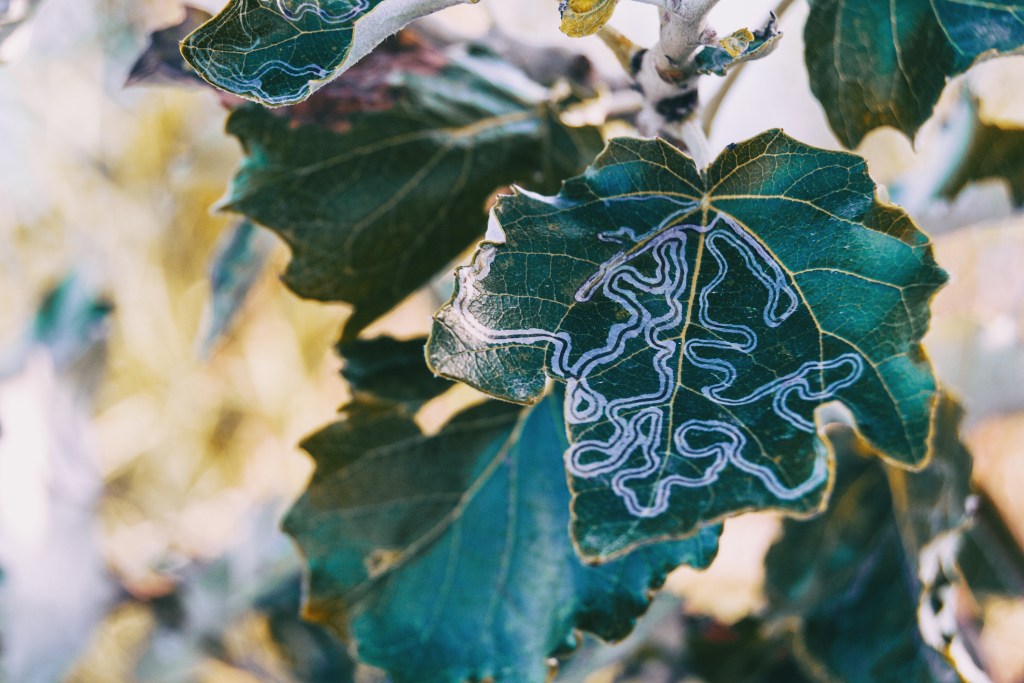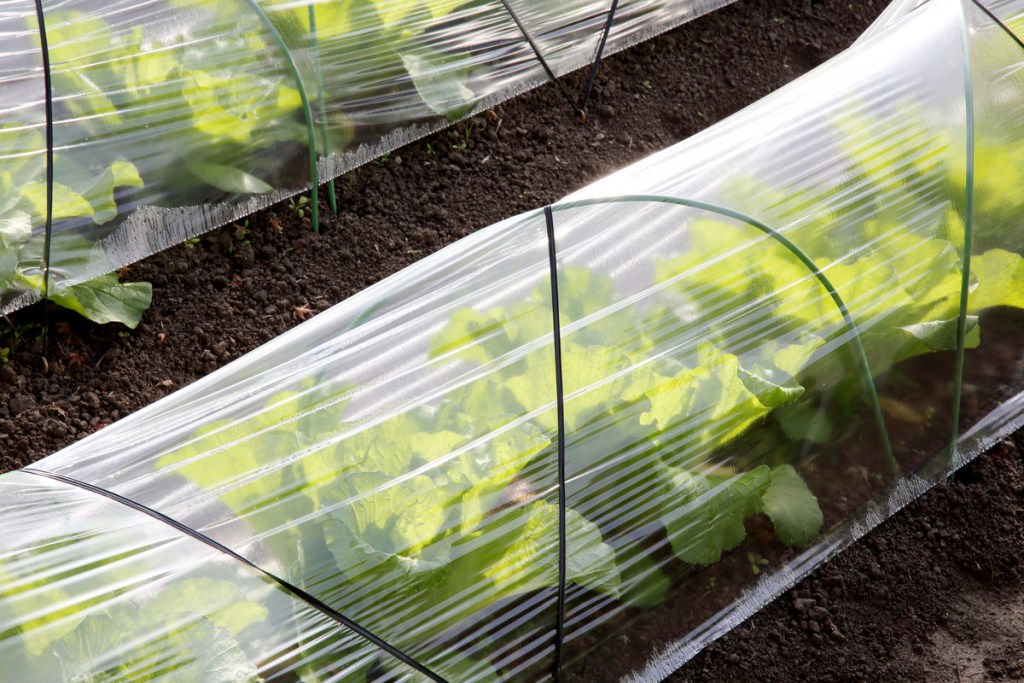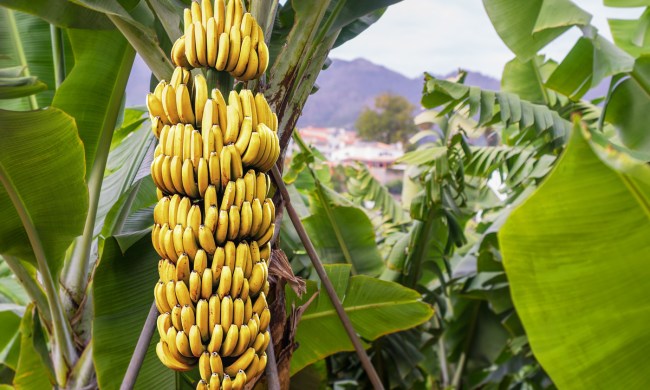If you’ve ever felt your stomach turn from seeing little twisted trails in your precious garden leaves, you’re not alone. While not necessarily the most harmful pests out there, leaf miners are annoying and off-putting. After all, who would want to eat veggies with insect larvae in between the leaves? Pesky as they may be, there are tried-and-true ways to get rid of leaf miners.

What are leaf miners?
“Leaf miner” is a bit of a catch-all term — it can refer to any number of fly, sawfly, or moth larvae that damage plant leaves. What happens is that a female adult insect lays its eggs on the underside of a leaf. After about 10 days, larvae hatch and feed on leaf tissue for two to three weeks. Once the larvae mature, they’ll move to the ground, pupate, and become adults. Then, the cycle repeats itself.
No matter what kind of bugs leaf miners are, their damage is distinctly the same. If you have a leaf miner problem on your leaves, you’ll notice yellow or white squiggly lines called serpentine mines. Sometimes, leaf miners also leave blotches or spots. They essentially feed within leaves and leave behind tunnels of dead tissue.
Leaf miners don’t necessarily affect the growth of your plants, but they can damage edible leaves and render ornamental foliage unattractive. They aren’t discerning when it comes to foliage; however, leaf miners can wreak havoc on trees, shrubs, edibles, and even flowers.

How do you control leaf miners naturally?
Leaf miners are particularly pesky because they’re usually protected within leaves, so eliminating them can be tricky — most pesticides don’t help manage them. With that in mind, there are a few ways you can control leaf miners at different stages in their life cycle. No matter which method you use, keep in mind that you want to remove and throw away any damaged leaves.
Pinching the trails
When you see leaf miner tunnels in your leaves, what you first want to do is squeeze the trails to kill the larvae. This may seem a little gross, but you’ll effectively kill the bugs and prevent them from further reproducing. If you’re lucky, you may even spot leaf miner eggs on the underside of a leaf before they hatch.
Breaking out the neem oil
With repeated spraying on an infested plant, a neem oil solution can interrupt the leaf miner life cycle by messing with feeding and mating routines. Neem oil may take a while to work, but it is a natural solution that eliminates leaf miners. You can find a ready-to-use neem oil solution or create your own. For the latter approach, mix a gallon of water with a tablespoon of neem oil, and then use a few drops of dish soap as an emulsifier. Place your solution in a sprayer and apply it to your plant on a weekly basis.
Alternatively, you could use a white oil solution if you don’t have neem on hand. Mix together 500 milliliters of water with 2 teaspoons of vegetable oil and 1 teaspoon of dish soap. When sprayed onto your infested leaves, this concoction suffocates the leaf miners and keeps them from mating.
Taking advantage of beneficial bugs
You can purchase parasitic wasps called Diglyphus isaea from nurseries to eat pest larvae in your garden. When released next to the infested plants, these bugs lay their eggs in the larvae, and their offspring consumes the larvae. Remember not to use a pesticide while using these wasps, as the pesticides can kill them.
Trying other solutions
If you’ve dealt with a fungus gnat infestation, you may be familiar with yellow sticky traps. The great news is that these traps also work with leaf miners. Adult leaf miners are attracted to the yellow or blue paper and inevitably trap themselves on the sticky surface. You can also pair these traps with a pheromone lure to help you detect the leaf miner adults.
For heavy infestations, some growers use a natural pesticide called spinosad, which comes from the soil bacteria Saccharopolyspora spinosa. Spinosad, which is used in drugs that treat head lice and pet fleas, impacts an insect’s nervous system and kills it within two days.

How do you prevent leaf miners?
To prevent leaf miners, check your garden regularly. Remove infestations while they’re small, so that leaf miners won’t have a chance to reproduce. You can also till your soil to destroy any hiding pupae burrowed into the soil and remove weeds from the ground to keep leaf miners from obtaining another food source. For a physical measure, finely meshed row covers make excellent protective barriers against these pesky critters as well.
For the most part, leaf miners are harmless. That said, they can wreak havoc on your crops, rendering your plants ugly and inedible with unsightly mines inside the leaves. Getting rid of them requires some patience, but there are plenty of solutions to eliminate them from your garden once and for all.


